
Iraq is home to remarkable historical sites, offering tourists an opportunity to explore its rich cultural heritage and history.
1. Babylon:
2. Hatra:
3. Ctesiphon:
4. Ur:
5. Nimrud:
6. Samarra:
7. Nineveh:
8. Ashur:
9. Al-Ukhaidir Fortress:
10. Al-Mada’in:
1. Babylon Iraq:
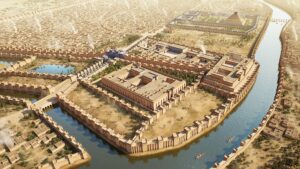
Babylon, located in Iraq, is one of the historical sites and an ancient city steeped in history and mythology, making it a must-see for tourists wishing to explore the cradle of civilization.
Known for its iconic Ishtar Gate, the Hanging Gardens, and the Tower of Babel, Babylon offers a glimpse into the grandeur and architectural marvels of the ancient Mesopotamian world.
Tourists can wander through the ruins of this UNESCO World Heritage Site, marveling at the remnants of the once-mighty city that was home to legendary figures such as Hammurabi and Nebuchadnezzar.
Visitors to Babylon can explore the reconstructed Ishtar Gate, adorned with vibrant glazed bricks depicting mythical creatures and gods.
This provides a window into the artistic and cultural achievements of the Babylonian civilization.
With this in mind, the Hanging Gardens, one of the Seven Wonders of the Ancient World, are believed to have been a lush oasis of greenery and cascading waterfalls.
They offered a serene retreat for the Babylonian royalty.
The Tower of Babel, a symbol of human ambition and divine intervention, is another highlight of Babylon that captivates tourists with its historical significance and architectural ingenuity.
Exploring the ruins of Babylon allows tourists to immerse themselves in the rich tapestry of Mesopotamian history.
They can view majestic palaces and temples, as well as intricate cuneiform inscriptions that tell the stories of ancient rulers and deities.
A visit to Babylon is a journey back in time to a world of myth and majesty, where the echoes of ancient civilizations still resonate in the desert sands.
2. Hatra Iraq:
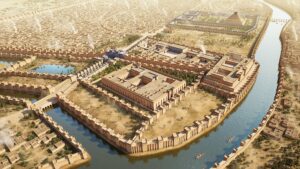
Hatra, located in northern Iraq, is an ancient city that stands as a testament to the grandeur and architectural prowess of the Parthian Empire.
This UNESCO World Heritage Site is one of the historical sites and a must for tourists who want to explore the rich history and cultural heritage of Iraq.
The well-preserved ruins of Hatra offer a glimpse into a bygone era, with its temples, walls, and sculptures.
These features showcase the unique blend of Hellenistic and Eastern architectural styles that characterized the Parthian civilization.
Also, tourists visiting Hatra can marvel at the intricate carvings and reliefs that adorn the temples, depicting scenes from mythology and daily life.
The city’s defensive walls, with their strategic towers and gates, provide insight into the military prowess of the Parthians and their ability to withstand sieges.
One of the most striking features of Hatra is the Temple of Shamash, dedicated to the sun god, which stands as a testament to the religious beliefs and practices of the ancient inhabitants.
The city’s central agora, or marketplace, offers a glimpse into the bustling commercial activities that once took place within its walls.
Exploring the ruins of Hatra allows tourists to immerse themselves in the rich history and cultural heritage of the Parthian Empire, from its artistic achievements to its military might.
A visit to Hatra is a journey back in time to a world of ancient splendor and architectural marvels that continue to captivate visitors to this day.
3. Ctesiphon Iraq:
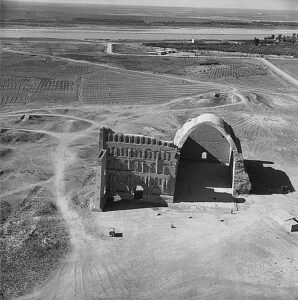
Ctesiphon, located in Iraq, is a historical treasure waiting to be explored by tourists.
This ancient city was once the capital of the Parthian Empire and later the Sasanian Empire, making it a significant site for history enthusiasts.
One of the most iconic landmarks in Ctesiphon is the Taq Kasra, also known as the Arch of Ctesiphon, which is a massive brick arch that dates back to the 3rd century AD.
This architectural marvel is a must-see for visitors interested in ancient civilizations.
Aside from its historical significance, Ctesiphon offers a unique blend of culture and tradition.
Visitors can experience this through its local markets, where they can shop for traditional handicrafts and sample delicious Iraqi cuisine.
The bustling streets of Ctesiphon are filled with vibrant colors and the sounds of daily life, providing a glimpse into the local way of living.
Of course, for nature lovers, the nearby Tigris River offers a tranquil setting for a leisurely boat ride or a relaxing picnic by the water.
The lush greenery surrounding the river provides a peaceful escape from the hustle and bustle of city life.
When visiting Ctesiphon, tourists should also take the time to explore the nearby ruins of the ancient city of Seleucia, which was once a thriving metropolis in the region.
The archaeological site offers a fascinating look into the past and provides insight into the rich history of the area.
Overall, Ctesiphon is a hidden gem in Iraq that offers one of the historical sites and a unique blend of history, culture, and natural beauty for tourists to explore and enjoy.
4. Ur Iraq:
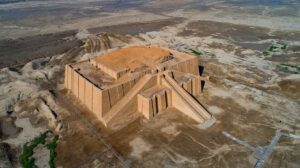
Ur, located in southern Iraq, is an ancient Sumerian city that holds a significant place in history as one of the earliest urban centers in the world.
Likewise, this UNESCO World Heritage Site is a must-visit destination for tourists interested in exploring the cradle of civilization and the birthplace of writing, mathematics, and astronomy.
The ruins of Ur offer a glimpse into the rich cultural heritage of the Sumerians, with its well-preserved ziggurat standing as a testament to their architectural achievements.
The Great Ziggurat of Ur, dedicated to the moon god Nanna, is a massive stepped pyramid that once served as the religious center of the city.
Tourists can climb to the top of the ziggurat and admire the panoramic views of the surrounding landscape, imagining the rituals and ceremonies that took place in ancient times.
The Royal Cemetery of Ur, discovered by archaeologist Sir Leonard Woolley in the 1920s, is another highlight of the site.
It contains the famous “Royal Tombs,” with treasures and artifacts that provide insight into the burial practices and beliefs of the Sumerians.
Exploring the ruins of Ur in Iraq allows tourists to step back in time and immerse themselves in the world of ancient Mesopotamia.
Tourists can experience everything from the bustling streets and markets to the grand temples and historical sites that once stood in this ancient city Iraq.
A visit to Ur is a journey through history, offering a glimpse into the origins of civilization and the enduring legacy of the Sumerian culture.
5. Nimrud Iraq:
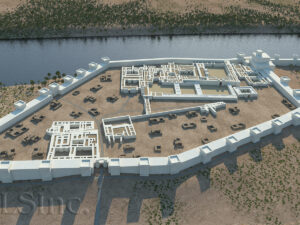
Nimrud, located in modern-day Iraq, is a fascinating archaeological site that offers a glimpse into the ancient history of Mesopotamia.
This ancient city, also known as Kalhu, was once the capital of the powerful Assyrian Empire and is now a UNESCO World Heritage Site.
Tourists visiting Nimrud can explore the remains of the city’s impressive palaces, temples, and tombs, which date back to the 13th century BC.
One of the most famous structures at Nimrud is the Northwest Palace, known for its intricate stone reliefs depicting scenes of royal life and military conquests.
Visitors can also marvel at the colossal statues of winged bulls and lions that once guarded the entrances to the city’s grand buildings.
These sculptures, known as lamassu, are iconic symbols of Assyrian art and architecture.
In addition to its architectural wonders, Nimrud offers insight into the daily life and culture of the ancient Assyrians.
The site’s archaeological finds include pottery, jewelry, and other artifacts that provide a glimpse into the daily lives of the city’s inhabitants.
Nimrud is a must-visit destination for history enthusiasts and archaeology buffs.
It offers a unique opportunity to step back in time and explore the rich heritage of one of the ancient world’s most powerful empires.
Nimrud in Iraq is sure to captivate and inspire visitors from around the world, whether you’re interested in ancient history, art, or exploring archaeological sites.
Plan your visit today to experience the wonders of this ancient city for yourself.
6. Samarra Iraq:
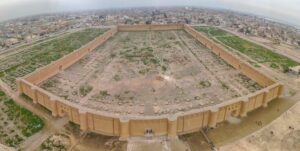
Samarra, located in Iraq, is a city rich in history and culture that offers a unique experience for tourists looking to explore historical sites and immerse themselves in a vibrant community.
Additionally, one of the most iconic landmarks in Samarra is the Great Mosque of Samarra, a UNESCO World Heritage Site known for its impressive spiral minaret.
Visitors can marvel at the intricate architecture and learn about the mosque’s significance in Islamic history.
For history enthusiasts, the Samarra Archaeological City is a must-visit destination.
This ancient city was once the capital of the Abbasid Caliphate and is home to numerous ruins and artifacts that provide insight into the region’s past.
Nature lovers will appreciate the beauty of the Tigris River, which flows through Samarra and offers picturesque views for those looking to relax and unwind.
The river also provides opportunities for boat tours and water activities.
Furthermore, foodies will delight in the local cuisine of Samarra, which features a blend of Middle Eastern flavors and traditional Iraqi dishes.
From savory kebabs to sweet pastries, there is something for every palate to enjoy.
In terms of accommodations, tourists can find a range of options in Samarra, from luxury hotels to cozy guesthouses that offer a more authentic experience.
The local hospitality is warm and welcoming, making visitors feel right at home.
Overall, Samarra is a hidden gem in Iraq that offers a diverse range of attractions for tourists to explore.
Whether you’re interested in history, nature, or cuisine, this city has something for everyone to enjoy.
7. Nineveh Iraq:
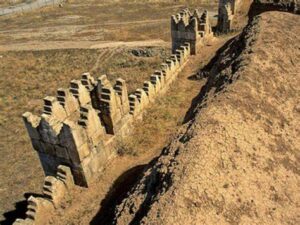
Nineveh, located in Iraq, is a historically significant city that offers a wealth of attractions for tourists interested in ancient historical sites and archaeology.
This ancient city was once the capital of the powerful Assyrian Empire and is now a UNESCO World Heritage Site.
Visitors to Nineveh can explore the ruins of the city’s grand palaces, temples, and fortifications, which date back to the 7th century BC.
One of the most famous sites in Nineveh is the Palace of King Sennacherib, known for its impressive stone reliefs and sculptures depicting scenes of royal life and military conquests.
Tourists can also visit the ancient city gates, such as the Gate of All Nations, which once served as grand entrances to the city.
The site also features the remains of the famous Hanging Gardens of Nineveh, one of the Seven Wonders of the Ancient World.
In addition to its archaeological wonders, Nineveh offers a glimpse into the daily life and culture of the ancient Assyrians through its artifacts and inscriptions.
Visitors can see pottery, jewelry, and other artifacts that provide insight into the city’s rich history.
For those interested in history and archaeology, Nineveh is a must-visit destination that offers a unique opportunity to step back in time and explore the legacy of one of the ancient world’s most powerful empires.
Plan your visit to Nineveh today to experience the wonders of this ancient city for yourself.
8. Ashur Iraq:
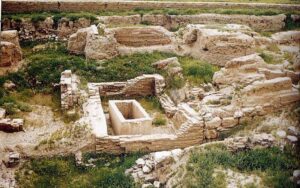
Ashur, located in Iraq, is a captivating historical site that offers a unique glimpse into the ancient Assyrian civilization.
As the original capital of the Assyrian Empire, Ashur holds immense historical significance and is recognized as a UNESCO World Heritage Site.
In other words, tourists visiting Ashur can explore the well-preserved ruins of the city, including the remains of grand palaces, temples, and defensive walls that date back to the 3rd millennium BC.
One of the most iconic features of Ashur is the ziggurat, a massive stepped pyramid that served as a religious center and symbol of the city’s power and prosperity.
Visitors to Ashur can also marvel at the intricate stone reliefs and sculptures that adorn the ancient buildings, depicting scenes of royal life, military conquests, and religious ceremonies.
The site offers a fascinating insight into the art, architecture, and daily life of the ancient Assyrians, showcasing their advanced civilization and cultural achievements.
For tourists interested in history and archaeology, Ashur is a must-visit destination that promises a rich and immersive experience.
Exploring the ancient ruins of Ashur allows visitors to step back in time and connect with the legacy of one of the most influential empires in the ancient Near East.
Plan your trip to Ashur today to discover the wonders of this remarkable historical site.
9. Al-Ukhaidir Fortress Iraq:
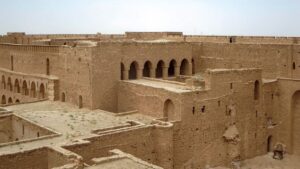
Al-Ukhaidir Fortress, located in Iraq, is a remarkable historical site that offers tourists a glimpse into the rich architectural heritage of the region.
Built during the Abbasid period in the 8th century, this desert fortress stands as a testament to the ingenuity and craftsmanship of the era.
The fortress is renowned for its distinctive mud-brick construction, featuring intricate geometric designs and ornate carvings that showcase the artistic prowess of the Abbasid artisans.
Overall, tourists visiting Al-Ukhaidir Fortress can explore the well-preserved ruins of the complex, which include a central courtyard, residential quarters, and defensive walls.
The fortress’s strategic location in the desert landscape provides visitors with panoramic views of the surrounding terrain, offering a unique perspective on the historical significance of the site.
In addition to its architectural splendor, the Al-Ukhaidir Fortress also holds cultural and historical significance as a symbol of the Abbasid dynasty’s power and influence in the region.
Tourists can immerse themselves in the history of the fortress through guided tours, informative exhibits, and interactive displays that highlight the cultural heritage of Iraq.
In general, for tourists interested in history, architecture, and archaeology, Al Khaider Fort is a place that promises a memorable and educational experience.
Plan your trip to Al-Ukhaidir Fortress today to discover the beauty and grandeur of this ancient stronghold in the heart of Iraq.
10. Al-Mada’in Iraq:
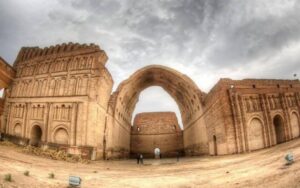
Al-Mada’in, located in Iraq, is a captivating historical site that offers tourists a glimpse into the ancient civilizations that once thrived in the region.
Also known as Ctesiphon, Al-Mada’in was once the capital of the Parthian and Sassanian Empires, making it a significant archaeological and historical treasure.
Tourists visiting Al-Mada’in can explore the impressive ruins of the city, including the iconic Taq Kasra, a massive arched gateway that is considered one of the largest single-span brick arches in the world.
The site also features the remains of grand palaces, temples, and defensive walls that reflect the architectural and engineering achievements of the ancient civilizations that inhabited the area.
Visitors to Al-Mada’in can immerse themselves in the rich history and culture of the region by exploring the intricate stone reliefs, sculptures, and inscriptions that adorn the ancient structures.
Overall, the site offers a fascinating insight into the art, religion, and daily life of the Parthian and Sasanian peoples, revealing their modern civilization and cultural contributions.
For tourists interested in history, archaeology, and ancient civilizations,
Al-Mada’in is a must-visit destination that promises a memorable and educational experience.
Plan your trip to Al-Mada’in today to discover the wonders of this remarkable historical site and to connect with the legacy of the ancient empires that once flourished in Iraq.







